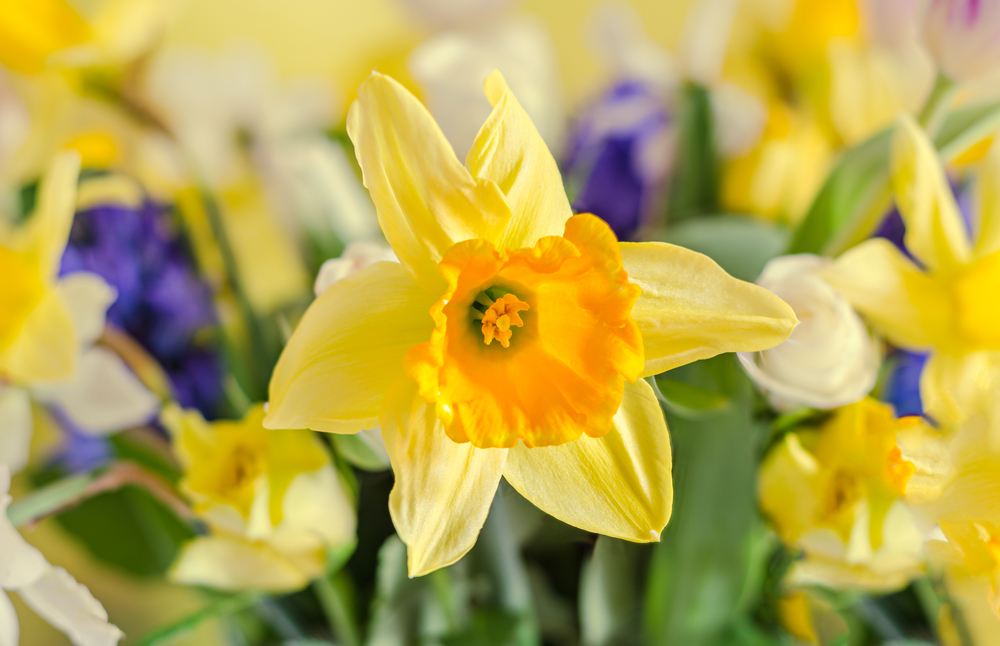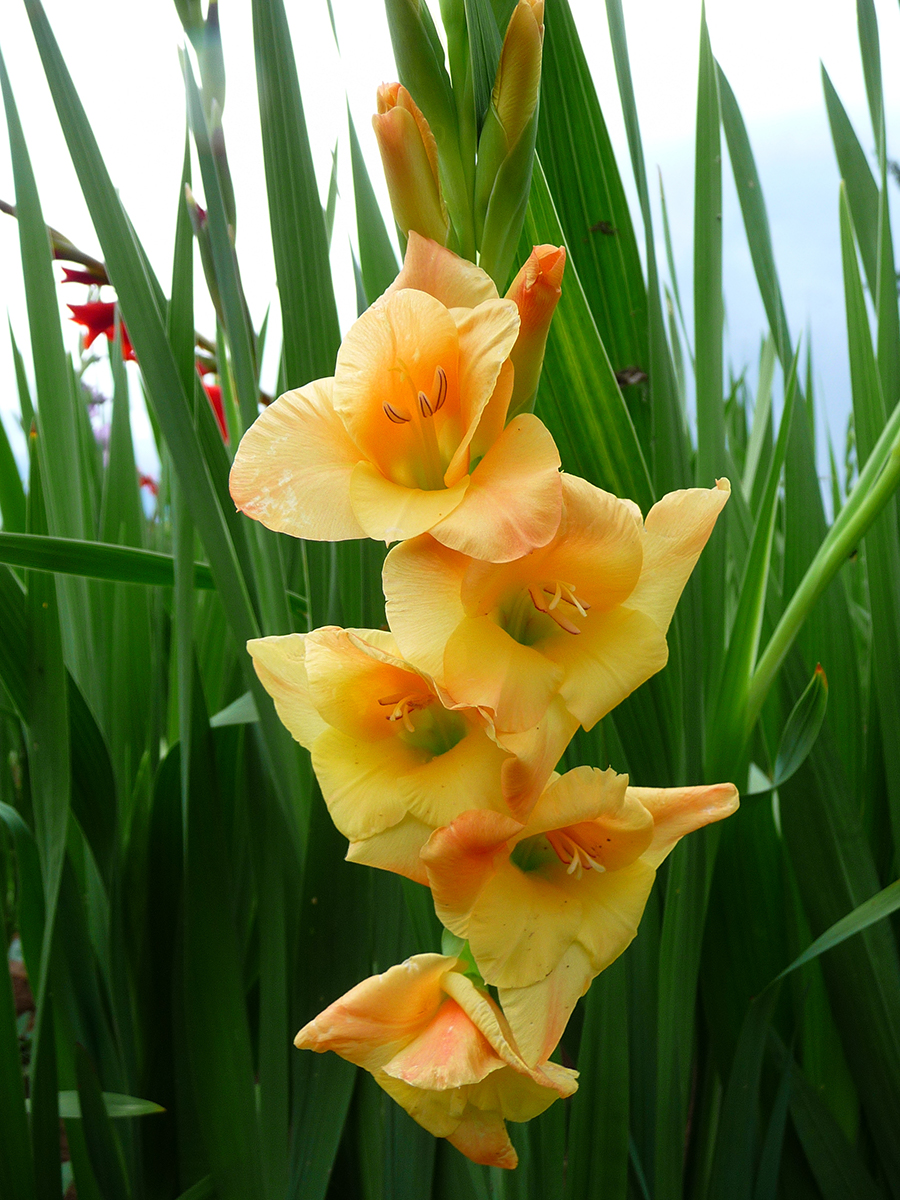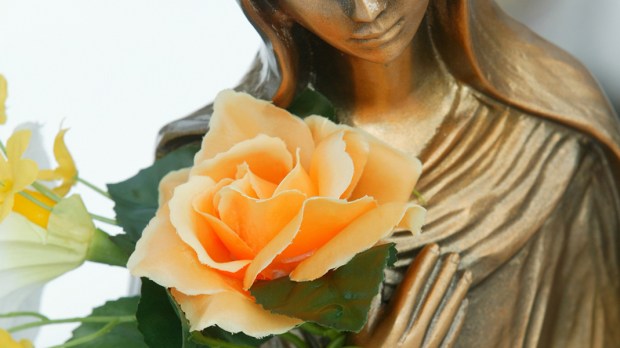Marigolds, baby’s breath, bleeding hearts … ever wonder where the whimsical, creative names of flowers come from? It turns out that many flower names have Catholic roots.
Religious flower names originated, like so many great things, in the Middle Ages. In an era when human societies were far more connected to the natural cycles of the seasons and the attendant liturgical calendar, and when pious legends accounted for much that was mysterious about the natural world, flowers easily became associated with various religious feasts and images.
Some of these connections have persisted to our own time—holly and ivy at Christmastime, for example. But in the medieval era, the symbolism of flowers played an important and useful role for the faithful. Flower names actually were used as a means of catechesis.

Katrina Harrington, a Catholic artist and mother of five whose art focuses on Marian symbolism of flowers, explains some of the history behind the tradition.
“Stained glass windows in churches originated because people didn’t have books, and not only did they not have books, but they couldn’t read. So stained glass windows were a means of catechesis for the masses,” Harrington says.
The names of flowers played a similar role. “Priests would pass down these legends about flowers, and the flower names became methods of catechesis,” she says.
A natural connection arose between the times of year when different flowers were at their peak and the liturgical calendar. Hostas, for example, were called “Assumption lilies” as they are typically in bloom around the feast on August 15. Columbines are typically in bloom around the feast of the Visitation on May 31, when Mary traveled to visit her cousin Elizabeth, and fittingly were called “Our Lady’s shoes.”
The vast majority of flowers were named for the Virgin Mary. Daffodils were called Mary’s star, Bleeding hearts were Mary’s tears, marigolds were Mary’s gold and baby’s breath was Our Lady’s veil.

To the man or woman of the Middle Ages, these common flowers became like living rosary beads, covering the surface of the Earth. The religious names of flowers and the stories behind them were not just quaint tales for children, but offered reminders of eternal life and called the pious into deeper contemplation of sacred truths.
Flowers still offer this opportunity, gently calling passersby to turn their minds and hearts to God.
“Mary gardens and the historical legends of religious flowers are a great path back to Christ. I really love talking about how you can see them everywhere, and they will help your day,” Harrington says.
Harrington remembers an occasion when she noticed sword lilies next to her car on a particularly hectic day—sword lilies, which were traditionally called Our Lady’s sword of sorrow. “I remember I can ask Mary’s intercession and go to her in times of trouble,” she says.

Learning some of the religious names of flowers can be a wonderful way to recall God throughout the day and contemplate more deeply His message of love and redemption, especially if you are a gardener with your own flowers to tend. But even if you never get a chance to learn the religious names of flowers, just noticing the beauty of God’s creation is its own opportunity to “always and everywhere give Him thanks.”
Especially in the summer and early autumn, when ripe fruit and lush blooms are all around, occasions are plentiful to give thanks for God’s bounty. Even noticing the bright colors of berries or the heart of a peach is a moment to wonder at God’s marvelous creation.
“God is the most prolific artist, and He’s always trying to lead us to him with beauty,” Harrington says. “God is giving us these hints everywhere through His creation.”
Much more information about the religious symbolism of flowers and Mary gardens can be found in the writings of John Stokes, a professor who made this research his life’s work.

Read more:
In pictures: The lovely spiritual symbolism of flowers

Read more:
9 Inspiring quotes from popes on caring for God’s creation

